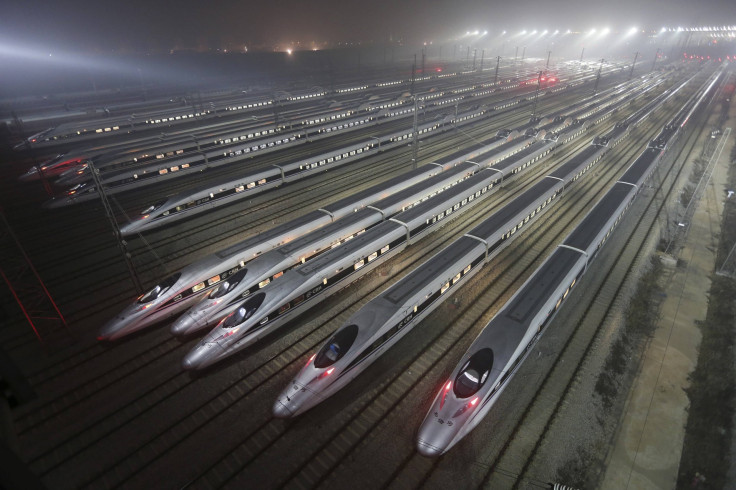World’s Longest High-Speed Rail Line Unveiled In China

China unveiled the world’s longest high-speed rail line Wednesday, the latest milestone in the nation’s rapid (and often troubled) high-speed network.
The 2,298-kilometer (1,428-mile) Beijing-to-Guangzhou high-speed rail link whisked passengers from the capital to the southern commercial hub at an average speed of 300kph (186mph), covering half of China in just eight hours.
According to the Ministry of Railways, a total of 155 pairs of trains will run daily on the line, covering a distance that previously took 20 hours. The service is expected to radically change travel patterns as it stops in other regional hubs like Shijiazhuang, Wuhan and Changsha.
However, speed comes with a price. Because even a second-class seat on the new high-speed line will be relatively expensive at 865 Yuan ($138), the Ministry said it will still run 183 pairs of trains on the old Beijing-Guangzhou line with sleeper fares of around 430 Yuan ($69).
Still, the South China Morning Post reported several travelers who expressed shock at the steep prices.
China’s high-speed rail network debuted in 2007 and quickly became a major competitor with airlines for the domestic market. Following Wednesday’s debut, prices for short-distance flights in the region dropped by as much as 30 percent, making them far cheaper than the high-speed rail.
State news agency Xinhua said a string of measures were put in place to insure safety, which has been a major concern for China’s high-speed railway since a bullet train crashed near the southern city of Wenzhou last July, killing 40 passengers and injuring more than 170 others. Faulty signaling equipment and improper management were blamed for the accident.
The new line reportedly has updated equipment that improves the control system and addresses possible problems that could occur during extreme weather conditions. A bullet train mechanic named Zhang Hongsheng told Xinhua that inspections are now conducted on an hourly basis on high-speed trains to ensure safety.
“We also maintain regular risk checks and timely communication with the train driver, the conductor and the crew,” he said.
China’s official news agency has good reason to tout the new safety procedures. In recent months, the system has faced a serious of high profile problems.
After last year’s accident, the People’s Republic scaled back its high-speed rail projects for a time, but the number of approved projects is once again on the rise as the nation seeks to boost its economy in what National Geographic investigative reporter Ian Johnson has called “an engineering blitzkrieg meant to awe the Chinese people and show off the nation’s new industrial might.”
“Less impressive have been the costs -- financial and human,” Johnson reports. “Last year, two events happened that continue to shake the railway system and China as a whole.”
The first event, he says, was the crash outside Wenzhou, which left many Chinese wondering if the development-at-all-costs strategy had made them simply statistics. The other event was the detention of China’s once-powerful railway minister, Liu Zhijun, “an old-style communist central planner who rolled out the high-speed network like a general using human-wave tactics.”
More recently, part of a high-speed line collapsed in central China after heavy rains in March.
Yet, the program continues at a record pace. China now has more than 9,300 kilometers of high-speed rails in operation, and it expects to double that by 2015. The Beijing-Guangzhou line is one of just four north-south lines that will form the backbone of the system, in addition to four east-west lines to be completed by 2020.
© Copyright IBTimes 2024. All rights reserved.






















